Conifers in the Landscape
Conifers are more than hedges or windbreaks; they are excellent as a four-season backbone for a landscape and as a specimen plant in themed gardens.
Evergreen conifers provide year-round interest. During the spring, bright new growth and cones appear. As the needles and cones mature, the foliage will transition to a more even summer color as annuals and perennials become the focal point.
When the weather begins to cool and the rest of the landscape goes dormant, the conifers will keep their color, and some may even change color. The conifers will become the focal point of the landscape through the winter and into the spring.
Not all conifers are background elements in a four-season garden. Many cultivars are striking specimens that add a unique character to a landscape or container garden.
Picea omorika ‘Peve Tijn’This dwarf conifer is an excellent option for rock gardens and rocky, sandy soil. The needles have a deep, blue/green color with yellow tips, and the overall shape is a short, mounding pyramid.
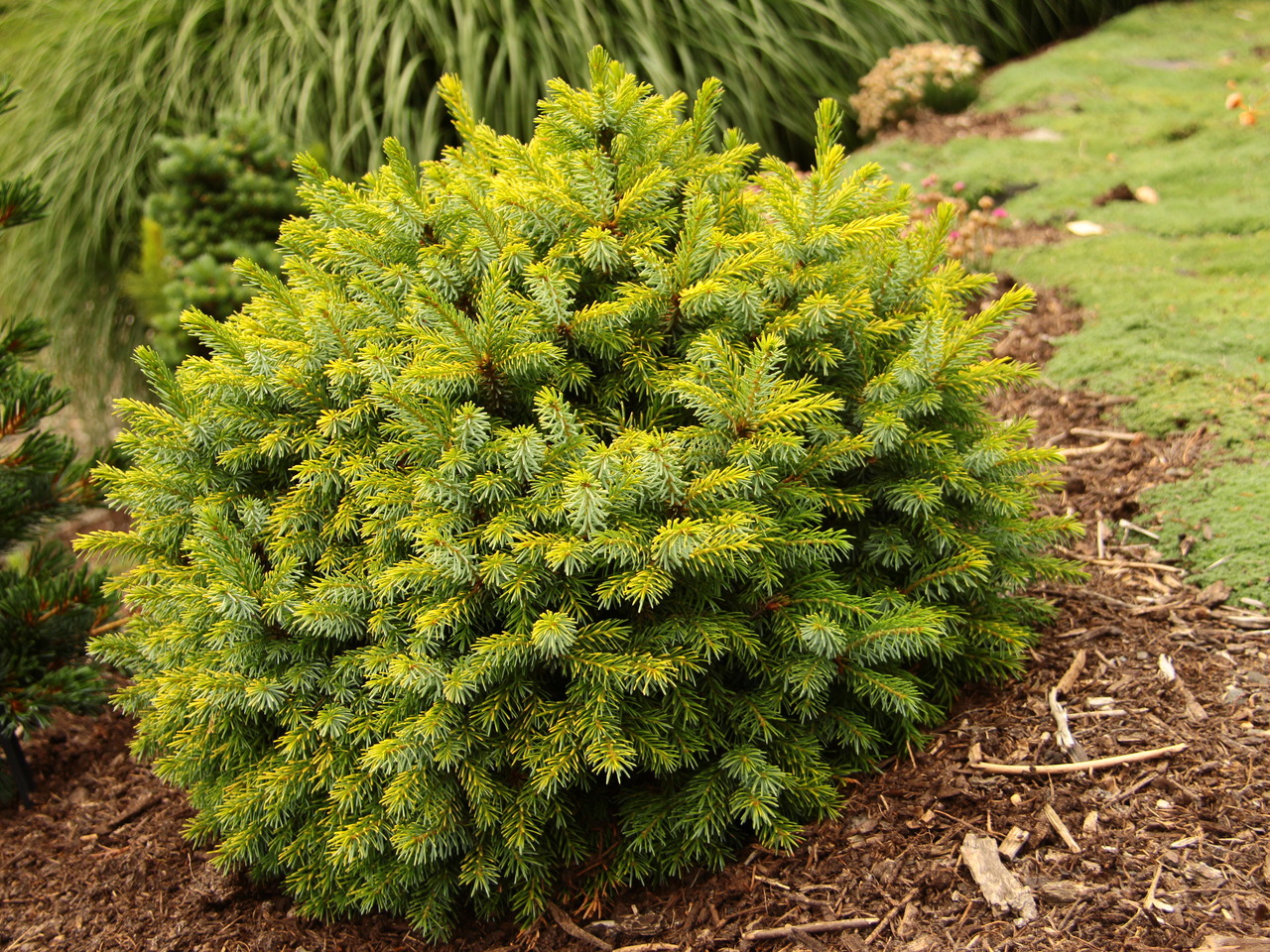
Picea omorika ‘Peve Tijn’
This weeping conifer has an upright leader, so it does not need staking. However, the branches are extremely flexible, and this may be the most pendulous Serbian spruce cultivar.
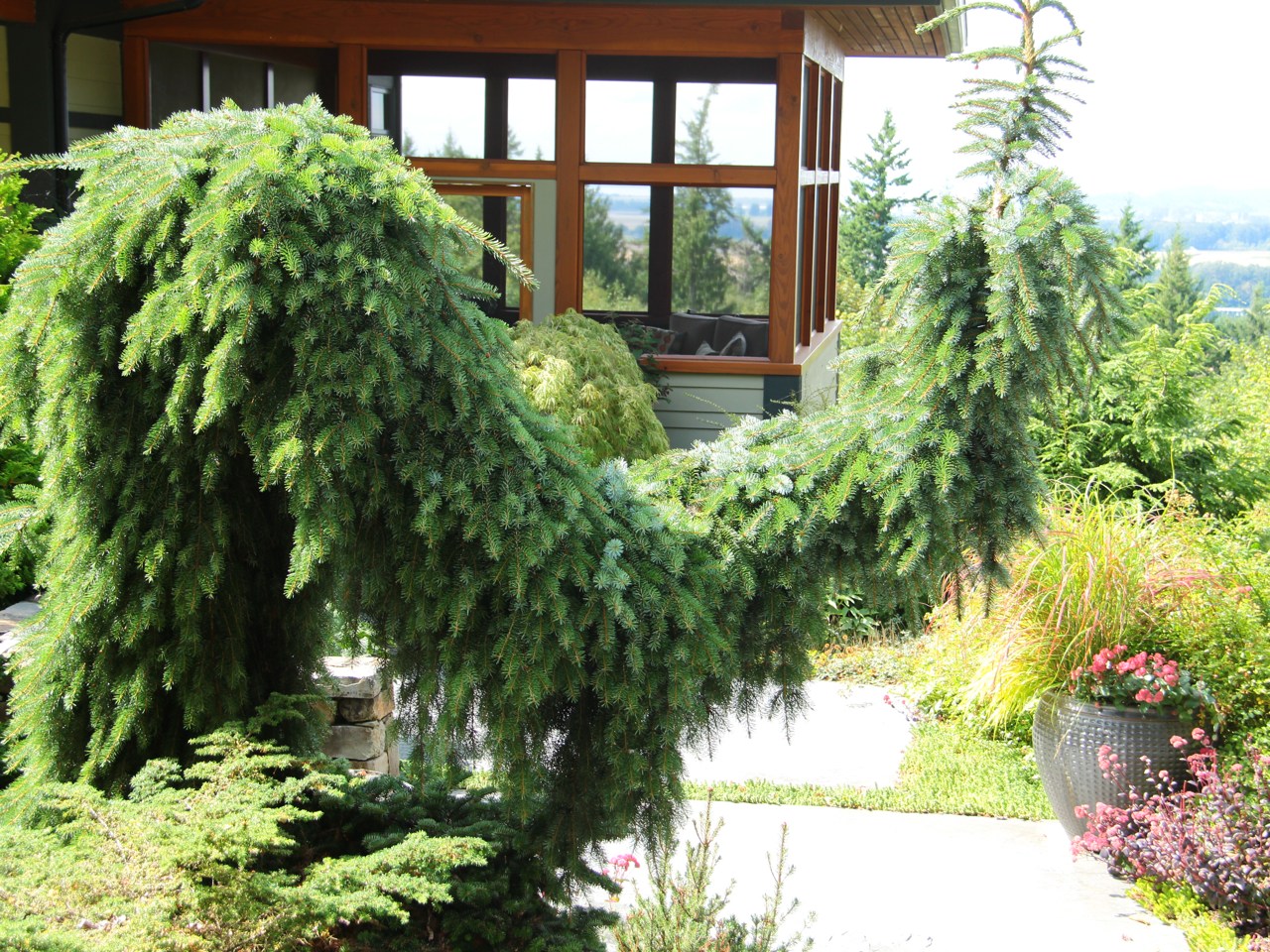
Picea omorika ‘Pendula Bruns’
This weeping Norway spruce has a lime green/golden color and slightly pendulous branches. The tree is hardy to zone 3, and it performs well in part shade.
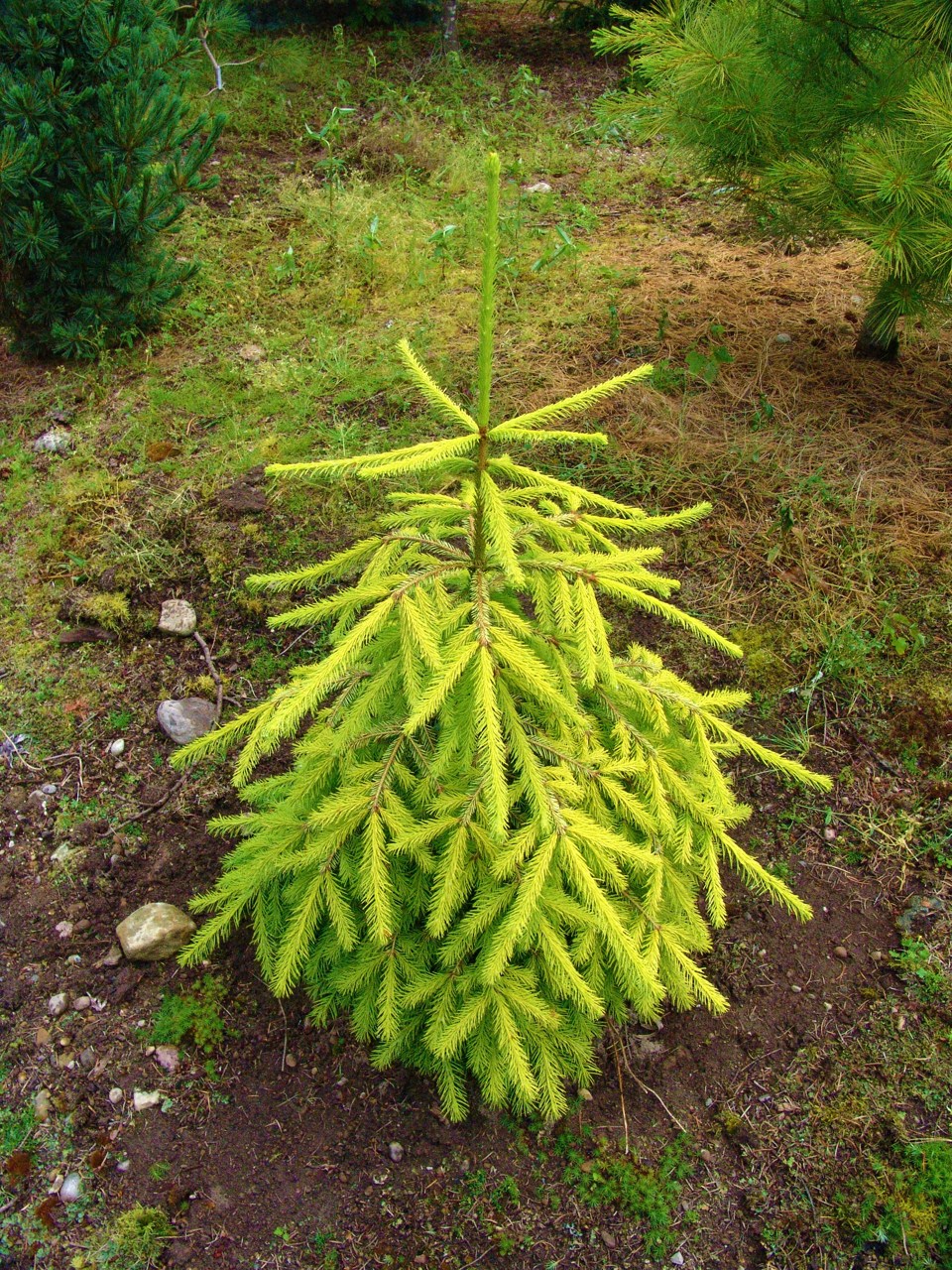
Picea abies ‘Lemon Joy’
This conifer has deep green needles, but in the spring, new growth emerges in bright red tufts. The mature tree is a medium-sized, open pyramid.
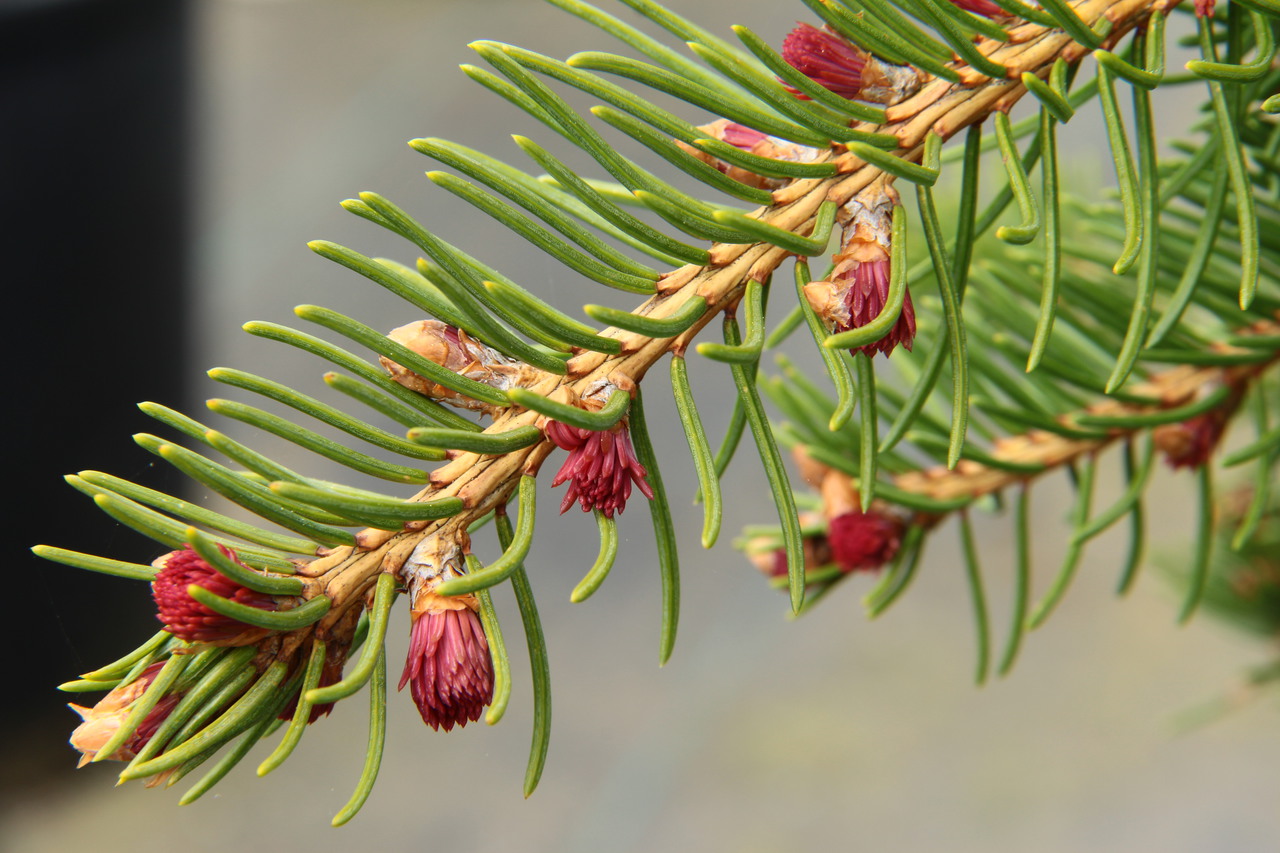
Picea abies ‘Rubra Spicata’
This dwarf conifer has a year-round white color that excels in part shade. The tree has an open, pyramidal shape, but it will burn in full sun.
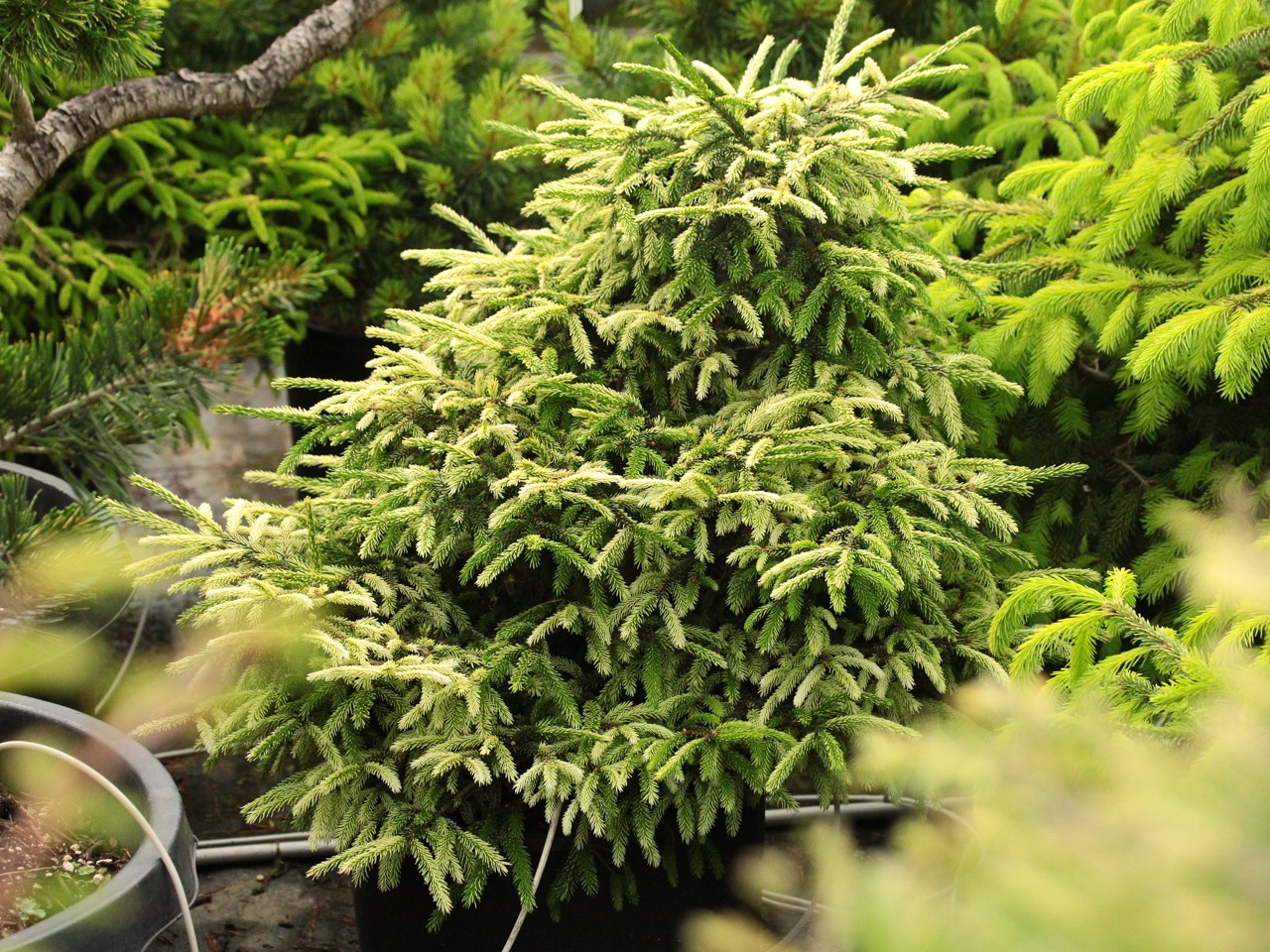
Picea orientalis ‘Silver Seedling’